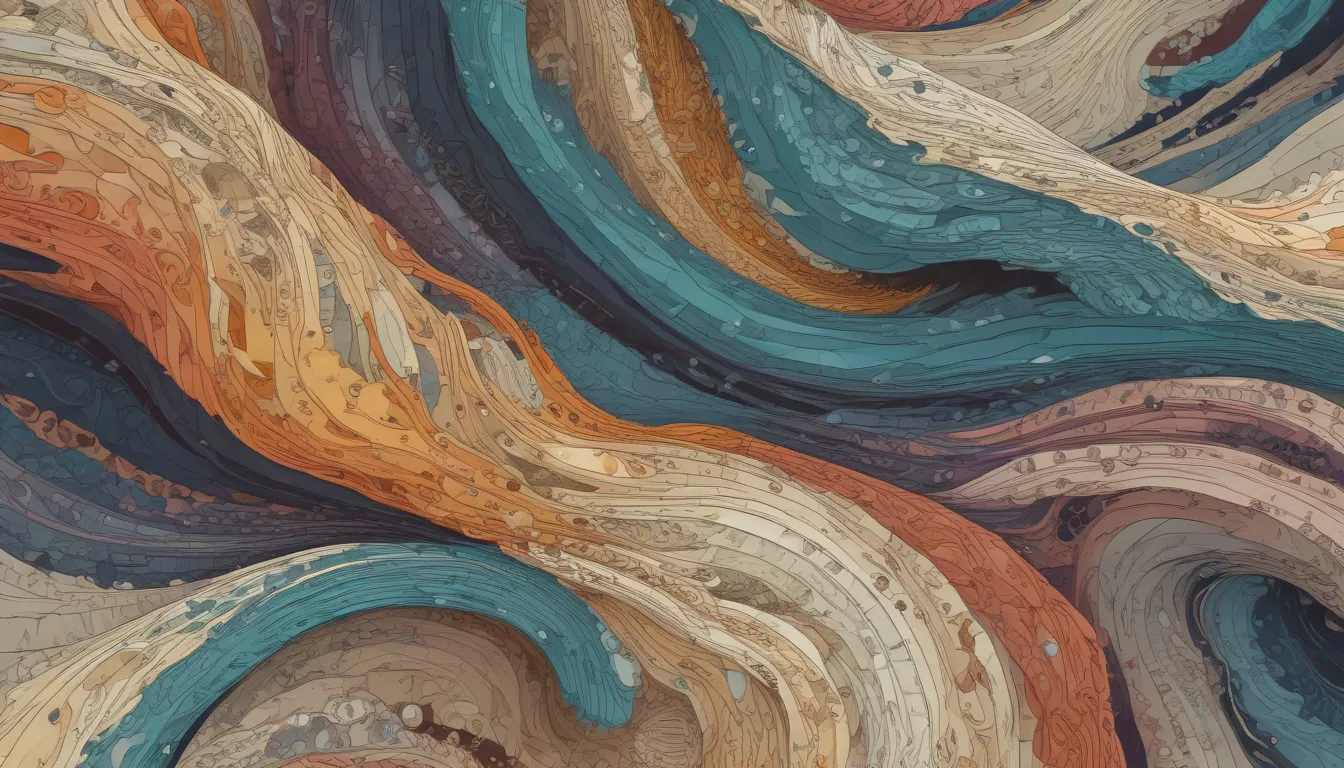A Note About Images: The images used in our articles are for illustration purposes only and may not exactly match the content. They are meant to engage readers, but the text should be relied upon for accurate information.
Welcome to the world of Ogive, a fascinating concept that intertwines statistics with geography to unlock hidden insights within data. In this comprehensive guide, we will delve into the realm of Ogive, exploring its historical origins, mathematical applications, and practical implications across various fields. From the graceful curve symbolizing strength and elegance to its role in aerodynamics, architecture, and art, Ogive continues to captivate and inspire with its timeless appeal.
Unveiling the Origins of Ogive
The term “Ogive” traces its roots back to the French word “ogive,” which translates to “pointed arch.” Initially used in architecture to describe a pointed arch or vault, the term has transcended into mathematics, ballistics, and beyond, transcending boundaries to encompass a diverse range of applications.
Embracing the Mathematical Marvel of Ogive
Within the realm of mathematics, Ogive takes the form of a graph depicting cumulative distribution. It serves as a powerful tool in statistics, enabling the visualization of cumulative frequencies through the construction of cumulative frequency curves. This mathematical concept plays a crucial role in analyzing patterns, trends, and relationships within data sets.
Ogive: Beyond Statistics to Ballistics
In the realm of ballistics, Ogive showcases its utility through the curved shape adorning the tip of projectiles such as bullets and missiles. This distinctive shape enhances aerodynamics by reducing air resistance, thereby improving velocity and overall performance. The seamless integration of Ogive in ballistics highlights its versatility across diverse fields.
Exploring the Historical Significance of the Ogive Shape
From ancient architectural marvels to modern aerospace engineering, the Ogive shape has left an indelible mark on human creativity and innovation. Its presence can be witnessed in revered structures like Gothic cathedrals and Islamic architecture, where its elegant curve adds a touch of sophistication and aesthetic appeal. The historical significance of the Ogive shape resonates through generations, showcasing its enduring influence in design and construction.
Unveiling the Versatility of Ogive Across Fields
The Ogive shape transcends traditional boundaries, venturing into aerospace engineering where it plays a pivotal role in enhancing aircraft wings and spacecraft components. By leveraging the aerodynamic properties and structural integrity of the Ogive shape, engineers can optimize performance and efficiency, paving the way for groundbreaking advancements in aviation technology.
Unraveling the Curved Nature of Ogive
Central to the allure of Ogive is its gentle curve, meticulously designed to distribute forces evenly and reduce stress concentrations. This intrinsic characteristic enhances the strength and durability of structures and projectiles, underscoring the significance of the Ogive shape in engineering and design.
Embracing Ogive in the Realm of Aerodynamics
The aerodynamic prowess of the Ogive shape emerges as a cornerstone of its utility in projectile design. The smooth curve fosters reduced drag, enabling projectiles to travel farther and faster while maintaining stability during flight. The harmonious marriage of form and function in Ogive shapes underscores its indispensable role in aerodynamics.
Nurturing Artistic Expressions through Ogive
In the realm of glassblowing, Ogive emerges as a prime muse for creating elegant and visually appealing glass objects such as vases and bottles. The graceful curve of the Ogive shape infuses a sense of grace and sophistication into these handcrafted pieces, elevating them to artistic masterpieces that captivate the eye.
Delving into the Symbolism of Ogive
Across cultures, the Ogive shape embodies symbolic significance associated with strength, resilience, and balance. This symbolism translates into the realm of art and design, where the use of the Ogive shape evokes these qualities and fosters a harmonious aesthetic. The profound symbolism encapsulated within the Ogive shape resonates deeply with those who appreciate its enduring allure.
Envisioning Ogive in Bridge Design
The Ogive shape finds application in the realm of bridge design, where it enhances the stability and structural integrity of bridge supports and arches. By incorporating the curve of the Ogive, engineers can evenly distribute loads, ensuring optimal stability and durability in bridge construction.
Unveiling the Functionality of Ogive Nose Cones
Aircraft and rockets leverage Ogive-shaped nose cones to streamline movement through the atmosphere by reducing air drag. This innovative design enhances propulsion efficiency, maximizing fuel efficiency and optimizing performance. The adoption of Ogive nose cones underscores its practical utility in enhancing aerodynamic performance.
Fostering Ogive-Inspired Patterns in Artistic Creations
The graceful curve of the Ogive serves as a wellspring of inspiration for artists and designers seeking to infuse elegance and sophistication into their creations. From textiles to wallpaper, the Ogive motif adds a touch of refined beauty, enriching artistic expressions with its timeless charm.
Precision in Ogive Measurements
In fields demanding precision such as engineering and manufacturing, the Ogive shape emerges as a benchmark for precise measurements. The defined curve of the Ogive enables accurate measurements, ensuring consistency and quality in the production process. The adoption of Ogive measurements underscores its role as a standard reference in precision-driven industries.
Harnessing Ogives in 3D Modeling
Ogives find widespread application in 3D modeling software, enabling designers to craft smooth and realistic shapes with mathematical precision. The mathematical properties of the Ogive curve empower designers to create lifelike representations of objects and structures, showcasing the versatility of Ogive across virtual realms.
Revering Ogive in Ancient Architecture
The legacy of the Ogive shape echoes through ancient architectural wonders like the Roman aqueducts and Egyptian pyramids, underscoring the advanced engineering prowess of past civilizations. The integration of Ogive shapes in these monumental structures attests to the sophisticated understanding of structural integrity and architectural finesse prevalent in ancient times.
Embracing Ogive-Like Shapes in Nature
Nature’s canvas unveils intricate examples of Ogive-like shapes, ranging from the petals of flowers to the contours of seashells. These natural manifestations underscore the functional and aesthetic appeal of the Ogive shape in the biological realm, highlighting its harmonious presence in the natural world.
Envisioning the Future of Ogive-Inspired Designs
The enduring allure of the Ogive shape continues to captivate designers and creatives, transcending temporal boundaries with its blend of aesthetics and functionality. With a timeless appeal that transcends generations, the Ogive shape remains a cornerstone in art, architecture, and various fields, promising to shape innovative designs and concepts in the years to come.
In Conclusion
Ogive stands as a testament to the enduring influence of geometric shapes in shaping our understanding of the world around us. From its historical origins to its contemporary applications, Ogive embodies a fusion of artistry, functionality, and symbolism that transcends traditional boundaries. By unraveling the mysteries of Ogive, we gain profound insights into the dynamic forces shaping our planet’s landscapes and influencing human endeavors.
Frequently Asked Questions
Q: What is an Ogive?
A: An Ogive is a curve that represents the cumulative frequency distribution of a dataset, commonly utilized in statistics and geography to visualize data distribution patterns.
Q: How is Ogive useful in geography?
A: Ogive serves as a valuable tool in geography by aiding in the visualization of data distribution across geographic areas. It provides insights into elevation changes, population patterns, and various spatial phenomena.
Q: Can Ogives be used for predicting future trends?
A: Ogives primarily serve as a tool for analyzing existing data and understanding past patterns, rather than predicting future trends. Other methodologies are better suited for future trend analysis.
Q: How can I create an Ogive?
A: To create an Ogive, plot cumulative frequencies on the y-axis and corresponding variables on the x-axis, connecting data points with a smooth curve to visualize cumulative distribution patterns.
Embracing Knowledge and Appreciation for Ogive
As we navigate the complex landscapes of statistics, geography, and beyond, Ogive emerges as a guiding beacon, illuminating hidden patterns and relationships within data. By embracing the knowledge and appreciation for this remarkable concept, we embark on a journey of exploration and discovery, unveiling the intricate tapestry of our planet’s geography. Let the timeless allure and functionality of Ogive inspire your creative endeavors and deepen your understanding of the dynamic forces shaping our world. As we peer into the future, Ogive’s legacy remains steadfast, promising to continue shaping innovative designs and conceptual frameworks for generations to come.






